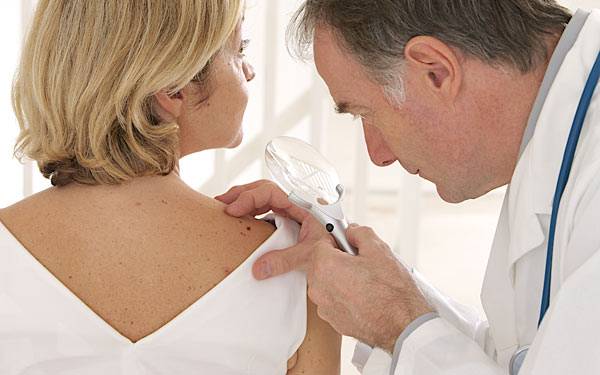How to Prevent Skin Cancer
5 ways to protect your skin, prevent most common cancer

5 ways to protect your skin, prevent most common cancer
Living in sunny places like Southern California means you need to wear sunscreen and take precautions when you’re outside. This helps prevent sunburns and reduces the risk of getting skin cancer.
“Being aware of the risks of sun exposure and the many things you can do to protect your skin are important skin cancer preventive steps,” says Hubert Greenway, Jr., MD, a dermatologist and head of Bighorn Mohs Surgery and Dermatology Center at Scripps Clinic Torrey Pines and head of the Cutaneous Section at Scripps Cancer Center.
Recognizing early signs of skin cancer is crucial. Early detection is important for effective treatment.
Who gets skin cancer?
Skin cancer is the most common type of cancer in the United States. One in five Americans will develop skin cancer in their lifetime.
Anyone can get skin cancer, but some are at higher risk, including people with fair skin or a family history of skin cancer. Dr. Greenway recommends people at risk for skin cancer get regular skin checks with a dermatologist.
Skin cancer has a high survival rate if caught early.
What are the types of skin cancer?
There are three main types of skin cancer: basal cell carcinoma, squamous cell carcinoma and melanoma.
Melanoma is the most serious type because it can spread to other parts of the body. Even though melanoma is rare, it causes skin cancer deaths. Melanoma is also common in people under 30, especially women. Squamous Cell Carcinoma can also spread, most commonly to lymph nodes.
The sun factor
Living in sunny areas all year can be nice, but it’s important to protect your skin from too much sun exposure. Overexposure to the sun plays a role in all three skin cancer types.
While a severe sunburn will heal on the surface in a few days, the real damage may not emerge until decades later.
“Cumulative sun exposure is a major skin cancer risk factor for developing nonmelanoma skin cancer,” Dr. Greenway explains. “Episodes of acute sunburn are often linked to melanoma.”
Five ways to prevent skin cancer
1. Avoid too much sun
Spending a lot of time outside without sunscreen or protective clothing for work or fun can raise your risk of skin cancer. The sun’s UV rays are the primary cause of skin cancer.
“Everyone needs to protect their skin from sun damage,” says Dr. Greenway. “In Southern California, where the sun’s rays burn stronger than in milder climates, using broad spectrum sunscreen with at least 30 SPF should be a daily ritual.”
Skin can be harmed by the sun’s UV rays in just 15 minutes if not protected. Even on cool and cloudy days, you still need sun protection since UV rays, not temperature, do the damage. Reflected rays from water, sand or snow can also increase your risk of sunburn.
Dr. Greenway recommends avoiding the sun between 10 am and 2 pm, when it's strongest. Plan outdoor activities like tennis, golf, or surfing for the morning or evening instead.
2. Avoid tanning beds
Avoid tanning beds and sunlamps as they also emit UV rays.
“Exposure to damaging rays should be avoided whether they are natural or artificial. Tanning beds raise the risk of melanoma. They also dry the skin, causing wrinkles and premature aging,” Dr. Greenway says.
3. Bring sun protection
Skin cancer awareness is about knowing that you can prevent it. Experts recommend keeping sun protection items in a bag to use when you go outside to avoid getting a sunburn.
Make sure to include:
- A lightweight long-sleeved shirt or other protective clothing
- A hat with a wide brim that shades your face, head, ears and neck
- Sunglasses to protect your eyes and surrounding skin (Dr. Greenway notes he has a sister who had melanoma of her eye requiring removal of the eye)
- Sunscreen with at least 30 sun protection factor (SPF) and broad-spectrum protection
4. Check your skin
While genetics is a risk factor, the fact is anyone who ever had a sunburn is at risk for skin cancer and should practice self-vigilance.
Moles that can become cancerous are often found on the head, neck, upper back, torso, or lower legs. They can also appear in other areas of the body.
Moles should be self-checked monthly. Mirrors and digital photographs can be useful to observe and track them. If a mole becomes darker, develops ragged borders or appears to be changing, see a dermatologist.
“Regardless of their family history or personal risk, people should watch for atypical moles, which tend to be multicolored and asymmetrical,” Dr. Greenway says.
An itchy mole can also indicate problems. If a mole just seems more obvious, it’s a good idea to get it checked by a dermatologist.
“Always remember that the most effective way to beat melanoma and other skin cancers is prevention,” Dr. Greenway says. “Otherwise, early detection is the best bet. Monthly self-exams and annual checkups can be lifesavers.”
5. Schedule skin cancer screenings
The Cutaneous Section of the Scripps Cancer Center recommends people at high risk of skin cancer see a dermatologist at least once a year for a full-body skin check. The American Cancer Society does not have specific screening guidelines for skin cancer. However, it recommends checking your skin often for any changes to stay aware.
Finding melanoma, the deadliest skin cancer, early is crucial as it spreads fast if not caught “In its earliest stages, melanoma can be removed surgically,” says Dr. Greenway.
“Mohs surgery is a precise surgical technique used for treating melanoma and other skin cancers. During this procedure, layers of cancer-containing skin are progressively removed and examined until only cancer-free tissue remains,” he says.
If melanoma has spread, other therapies may be required including immunotherapy which offers significant advantages in melanoma and other cancers.